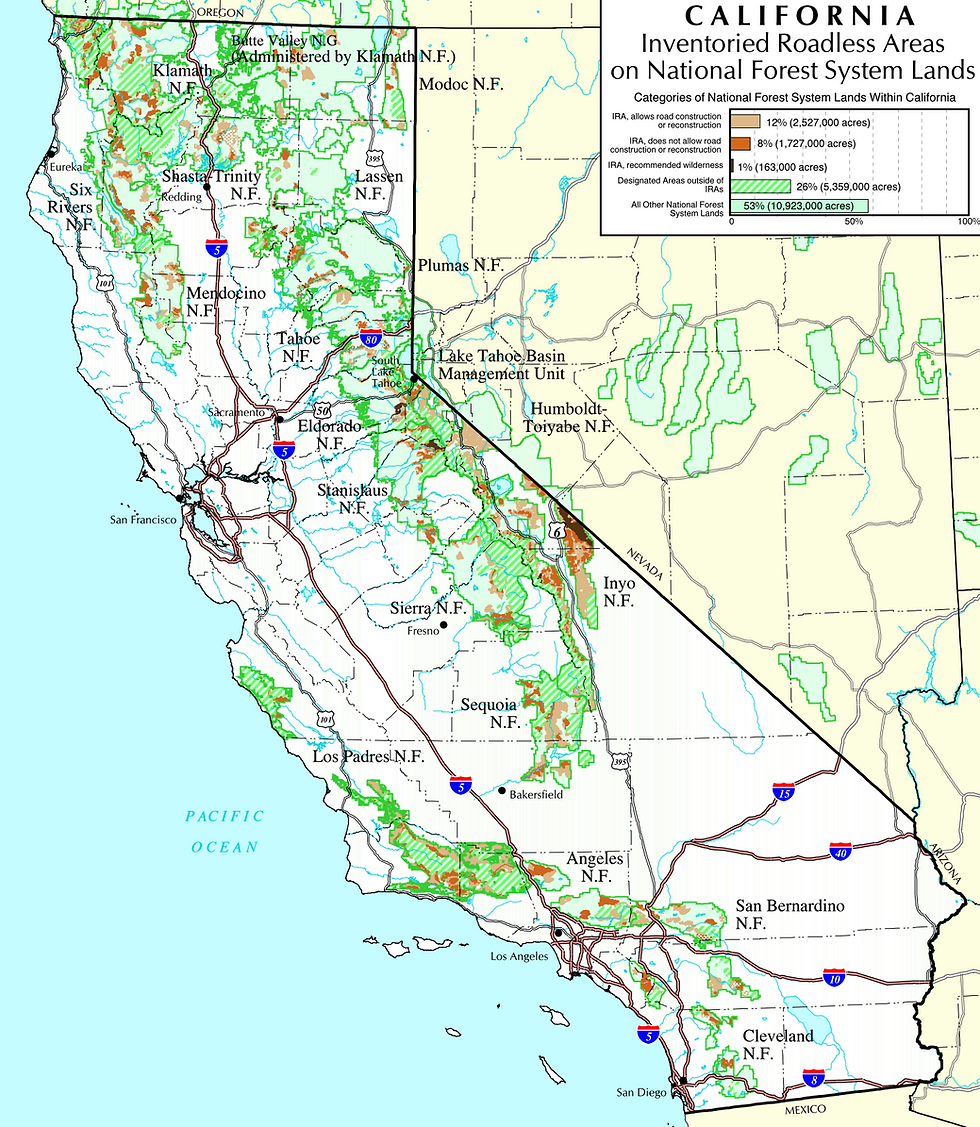Major Developments in NEPA Regulations: What You Need to Know
- Melodie Meyer

- Mar 11
- 4 min read
Since EPIC last discussed the state of the National Environmental Policy Act (NEPA), significant changes have unfolded regarding the Council on Environmental Quality’s (CEQ) regulatory authority. Most notably, on February 25, 2025, CEQ issued an interim final rule revoking its implementing regulations for NEPA.
NEPA is a broad law, with hundreds of federal agencies responsible for implementing it through their own regulations. CEQ’s role has historically been to provide consistent guidelines, ensuring clarity for both federal officials and the public. For nearly five decades, agencies have relied on these guidelines, so their sudden revocation has created significant uncertainty.
Adding to the regulatory upheaval, the Trump administration’s "Unleashing American Energy" Executive Order 14154 directed CEQ to provide new guidance on implementing NEPA and propose rescinding its regulations.
CEQ Memo Directing Agencies to Limit Environmental Review
On February 19, 2025, CEQ’s Chief of Staff issued a memo to all federal agencies addressing the status of CEQ regulations. Although the memo states it “doesn’t have the force of law,” it cites multiple directives for slashing CEQ’s regulatory authority, including:
Public Law 118-5 (Fiscal Responsibility Act of 2023): While this law primarily addressed the debt ceiling, its "Permitting Reform" section sought to accelerate economic growth by streamlining project approvals under NEPA.
The Unleashing American Energy EO: A Trump directive focused on ramping up oil and gas production under the guise of increasing government efficiency.
The memo directs agencies to prioritize “efficiency and certainty over any other policy objectives that could add delays and ambiguity to the permitting process.” This push for expedited permitting was designed to benefit the fossil fuel industry.
The memo also advises agencies to continue using the revoked CEQ regulations for ongoing NEPA reviews and legal defenses:
“Moreover, although CEQ is rescinding its NEPA implementing regulations at 40 C.F.R. parts 1500–1508, agencies should consider voluntarily relying on those regulations in completing ongoing NEPA reviews or defending against challenges to reviews completed while those regulations were in effect.”
However, environmental attorneys warn against relying on the old CEQ regulations in legal challenges, as courts could strike them down, similar to the precedent set in Marin Audubon Society v. Federal Aviation Administration.
CEQ’s memo further recommends that agencies revise their NEPA regulations to:
Consider only alternatives deemed technically and economically feasible by the agency.
Analyze “reasonably foreseeable” effects rather than cumulative impacts, stating: “Federal agencies should analyze the reasonably foreseeable effects of the proposed action consistent with section 102 of NEPA, which does not employ the term ‘cumulative effects;’ NEPA instead requires consideration of ‘reasonably foreseeable’ effects, regardless of whether or not those effects might be characterized as ‘cumulative.’”
Exclude projects with minimal federal funding or federal loans where there is insufficient government control over spending from NEPA review.
Eliminate environmental justice considerations from project impact analyses.
CEQ’s Interim Final Rule: A Regulatory Mess
On February 25, 2025, CEQ formally revoked its NEPA regulations through an interim final rule—a type of rulemaking that bypasses the traditional public comment process. Normally, agencies must allow up to 90 days for public input and provide responses to substantive concerns. However, CEQ justified skipping this requirement by citing “good cause” under the Administrative Procedure Act (APA). Good cause is typically found where the notice and public procedure are impracticable, unnecessary, or contrary to the public interest.
CEQ’s justification for its decision states:
“In light of these considerations [the dual directives contained in Executive Order 14154], and as exacerbated by the fact that the most recent amendment to its regulations has been vacated by a district court after it concluded that CEQ has no rulemaking authority, CEQ is concerned that agencies and the public are confused as to the status and legitimacy of its NEPA regulations.”
Ironically, the real confusion is caused by CEQ itself, as just days earlier, its memo encouraged agencies to continue using its revoked guidelines while developing new regulations. The interim final rule does little to provide clarity and instead adds another layer of regulatory uncertainty and creates pressure on agencies to reform their regulations in a manner contrary to the previous 5 decades of practice.
CEQ further argued that a formal notice and comment period is unnecessary because Executive Order 14154 revoked CEQ’s authority to issue binding rules, making the revocation a “procedural and ministerial step.” Meanwhile, over 15,000 public comments have already been submitted on the rule’s impact.
Where Does This Leave Environmental Oversight?
With CEQ’s regulations revoked, environmental advocates are left wondering what legal standards agencies must follow for environmental review. A spectrum of safety is emerging:
The safest approach is relying on NEPA itself, other relevant statutes like the Federal Land Policy and Management Act, and pre-1978 case law (before CEQ issued its first guidelines).
A moderate approach includes current regulations like those of the U.S. Forest Service, which mirror CEQ’s guidelines but do not explicitly reference them.
The riskiest approach is relying on CEQ’s revoked guidelines or agency regulations that incorporate them, as they could be legally invalidated.
While there has been bipartisan support for streamlining permitting in clean energy projects, there has rarely been broad support for deregulating polluting industries like oil and gas. The Trump administration’s moves under the guise of “growing the economy” are clearly aimed at gutting environmental protections.
At EPIC, we continue to stand behind NEPA’s core principles—ensuring transparency, public participation, and meaningful tribal participation in assessing project impacts.
In the coming months, federal agencies will begin drafting new NEPA regulations. It remains to be seen how much they will erode environmental safeguards, but one thing is certain: The next four years will be a critical fight for environmental protections.





Comments